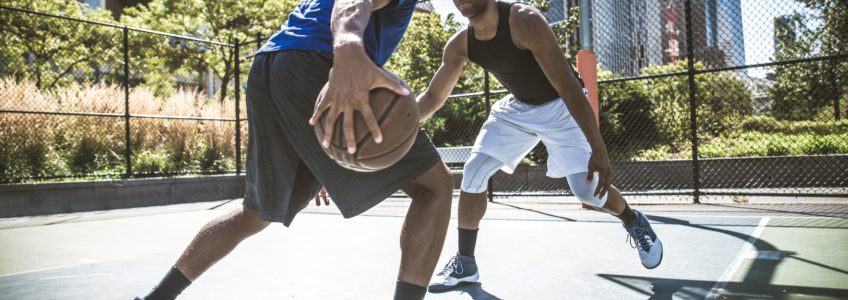
Knee injuries are very common among athletes, with the most dreaded of those injuries being an ACL or MCL tear. The knee is a complicated joint with several muscles, bones and ligaments working together to help you move but a tear of the ACL or MCL can sideline an athlete for several months or even an entire season.
While it is easy to lump the two knee injuries into the same category, they are actually quite different. Understanding the difference will help you make the right decisions about your treatment options. Regardless of the type of torn ligament, your orthopedic specialist will likely recommend surgery followed by physical therapy to help you recover.
ANATOMY OF THE KNEE
Your knee joint is formed where three bones meet: the femur (thighbone), tibia (shinbone) and patella (kneecap), which sits in front of the joint to provide protection. There are four primary ligaments in your knee that connects the bones and acts like strong cords to hold them together and keep the knee stable.
COLLATERAL LIGAMENTS
These ligaments are located on the sides of your knee and control the sideways motion of your knee and brace it against unusual movement. The medial collateral ligament (MCL) is on the inside and the lateral collateral ligament (LCL) is on the outside.
CRUCIATE LIGAMENTS
These are found inside your knee joint and control the back and forth motion of your knee. They cross each other to form an “X” with the anterior cruciate ligament (ACL) in front and the posterior cruciate ligament (PCL) in back.
WHAT IS AN ACL TEAR?
The ACL is responsible for steadying the knee, keeping the knee from turning too much and preventing the tibia from overextending itself. When a person injures their ACL, it is typically because of a sudden twist of the knee or a dislocation.
When the ACL is torn, the patient will usually hear a loud popping sound as the ligament tears. Pain is almost immediate and swelling occurs within an hour or two. Walking is difficult, the knee feels unstable and it may be difficult to fully extend or straighten the knee.
WHAT IS AN MCL TEAR?
The MCL’s primary function is to prevent the leg from over-extending inward, but it also is part of the mechanism that stabilizes the knee and allows it to rotate. In most cases, an MCL tear happens during a rigorous sporting activity, such as football or soccer. Injuries to the MCL most often happen when the knee is hit directly on its outer side which stretches the ligaments on the inside of the knee too far and leads to tearing.
When you experience an MCL injury, you may feel pain on the inner side of the knee, swelling and bruising at the inner side of the knee, stiffness in the knee, difficulty or pain when trying to bend or straighten the knee, a feeling as though the knee may give out or buckle and even pain or difficulty walking, sitting down, rising from a chair or climbing stairs.
HOW TO TELL THE DIFFERENCE
It can be easy to confuse the two injuries, as both a torn ACL and a torn MCL exhibits similar symptoms, including: swelling, inflammation, extreme pain and possible bruising. The main difference between an ACL tear and an MCL tear is that an ACL tear will have a distinctive popping sound, while an MCL tear will not.
TREATMENT FOR ACL AND MCL TEARS
MCL tears are typically easier to recover from than ACL tears. With an MCL tear, the recovery process may take up to eight weeks or more with rehabilitation. On the other hand, an ACL tear will most likely require surgery and at least six months or more of rehabilitation.
A torn ACL or MCL is a serious injury that should be assessed and treated by an orthopedic surgeon. At Ventura Orthopedics, our team of knowledgeable and experienced orthopedic and sports medicine physicians can diagnose your knee injury and provide the appropriate treatment. To learn more about treatment options for a knee injury or to schedule an appointment with one of our knee specialists, call us at 800-698-1280.

